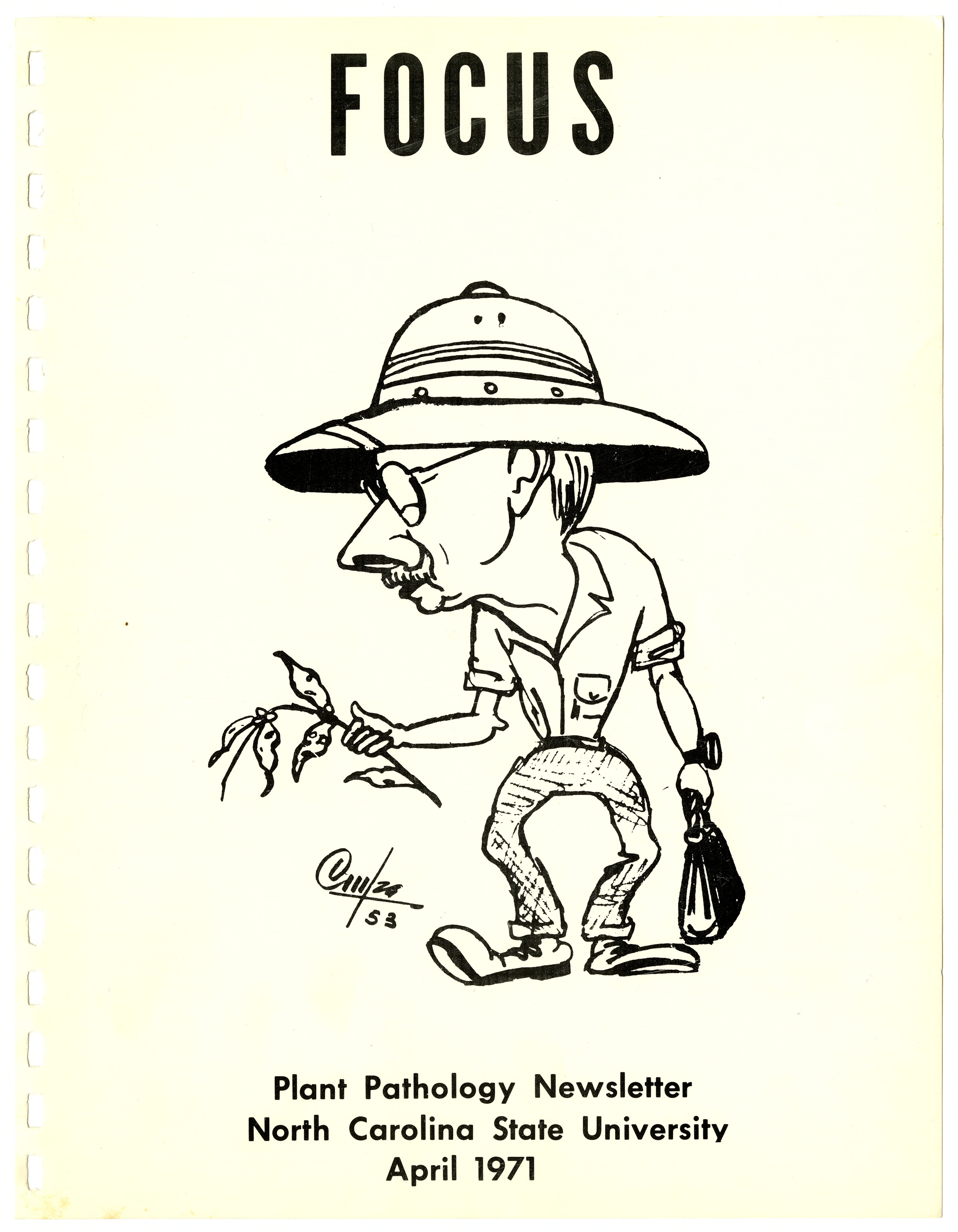
The cover of "Focus: Plant Pathology Newsletter", 1971 (Box 37, Folder 12)

The cover of "Focus: Plant Pathology Newsletter", 1971 (Box 37, Folder 12)
This blog post contributed by Alanna Natanson.
The Special Collections Research Center is pleased to announce updates to the Department of Plant Pathology Records collection guide, as well as the conclusion of a rehousing project for previously unprocessed sections of the collection. Although the rehousing project involved all kinds of resources, it most notably revealed a treasure trove of photographic material from the department. The SCRC is excited to help researchers glimpse North Carolina’s agricultural and academic history through the window of this collection.
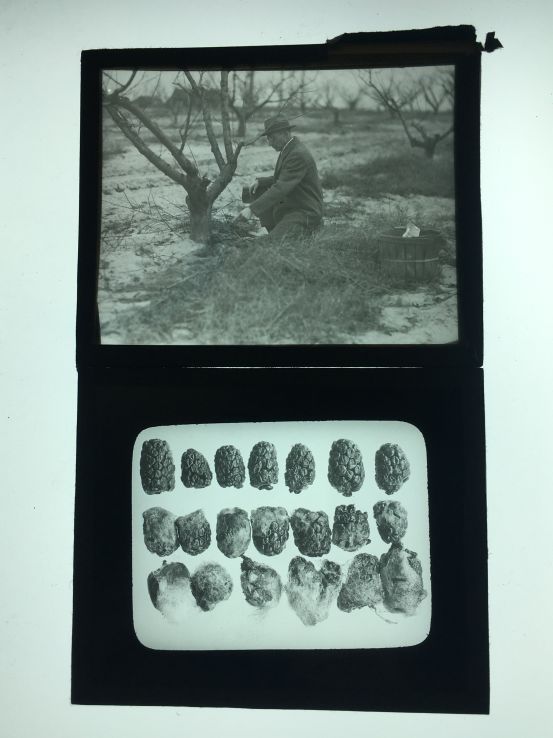
The Plant Pathology Department officially became an independent entity in 1958, but its roots date back to courses on plant pathology that Biology Instructor Frank Lincoln Stevens taught at the college beginning in 1901 (since 2016, Plant Pathology has been one-half of the Department of Entomology and Plant Pathology). Throughout its existence, the department has worked to save crops and other plants in North Carolina from the likes of black root rot, meadow nematodes, black shank disease, and mimosa wilt.
As the new additions to the collection show, the department engaged with the plant pathology discipline in three major ways. At the Method Road Greenhouse and under microscopes in Gardner Hall laboratories, staff researched plants and the pathogens attacking them.
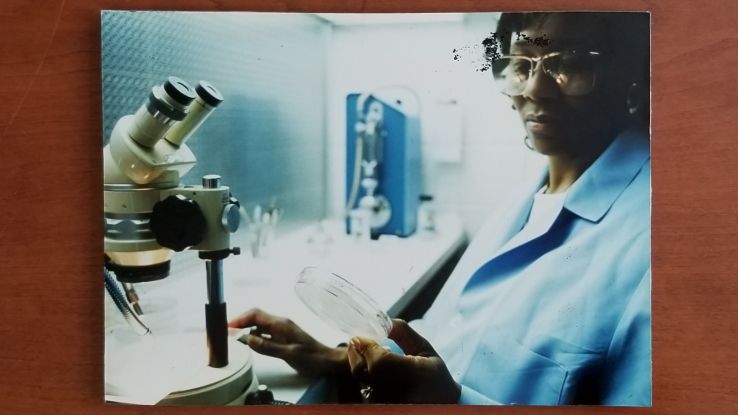
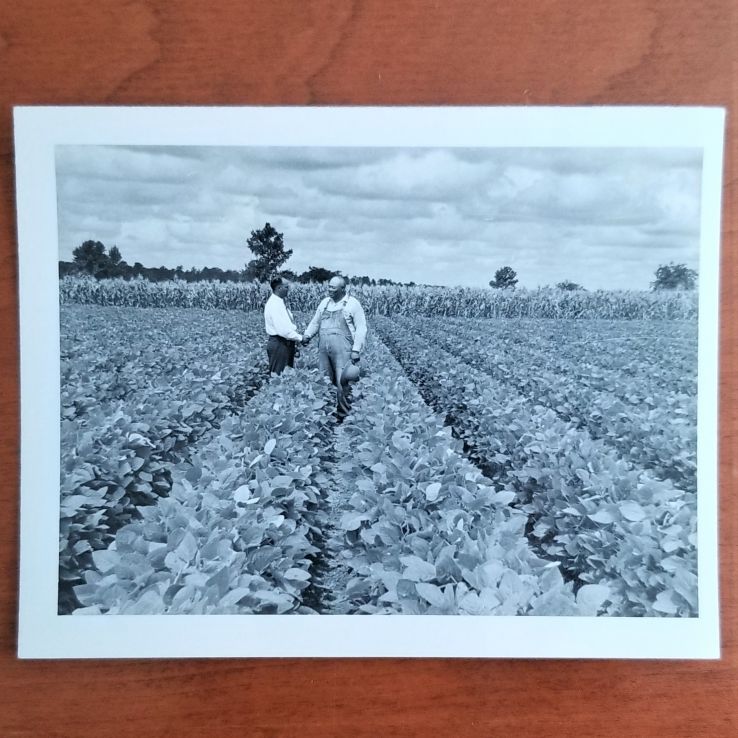
Second, faculty taught generations of NC State students about plant pathology. Finally, faculty and staff engaged with farmers across the state through the school’s Cooperative Extension program. They diagnosed plant diseases at the Plant Disease Clinic, led workshops on disease prevention practices, and gathered feedback about mitigation measures.
Faculty, who were predominantly male during the twentieth century, were most likely to have their names on departmental publications. But new parts of the collection document just how many graduate students and non-faculty staff—groups that were more likely to include women—contributed to research and extension initiatives. The newly processed materials, for instance, contain identified photographs of Nannette Henderson Smith, the first African American woman awarded a PhD at NC State, and Hedwig Hirschmann Triantaphyllou, the fourth woman in NC State’s history to become a full professor.
The collection guide also contains evidence of the department’s fun side, including an ode to nematodes called “The Nema Song” by faculty member George B. Lucas.
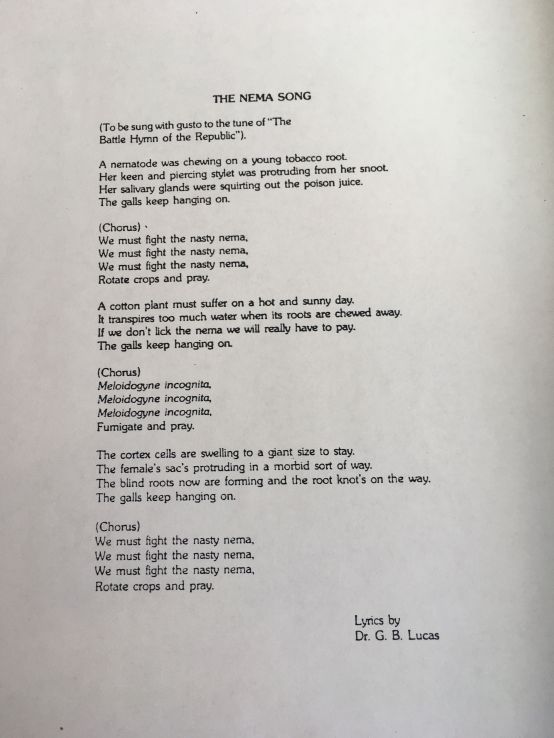
If you are interested in learning more about the Department of Plant Pathology, consult our digitized collections or the Historical State timeline for the department. You can also learn more about the department and/or plant pathology in Plant Pathology in North Carolina, 1776-1976 (Don E. Ellis, 1976) or From Laboratory to the Field: A History of Plant Pathology at North Carolina State University (Clay S. Griffith & Paul D. Peterson, 2008).
If you are interested in viewing the materials in this collection, you can access them by scheduling an appointment with the Special Collections Research Center. The Special Collections Research Center is open by appointment only. Appointments are available Monday–Friday, 9am–6pm and Saturday, 1pm–5pm. Requests for a Saturday appointment must be received no later than Tuesday of the same week. If you have any questions or are interested in viewing Special Collections materials, please contact us at library_specialcollections@ncsu.edu or submit a request online.